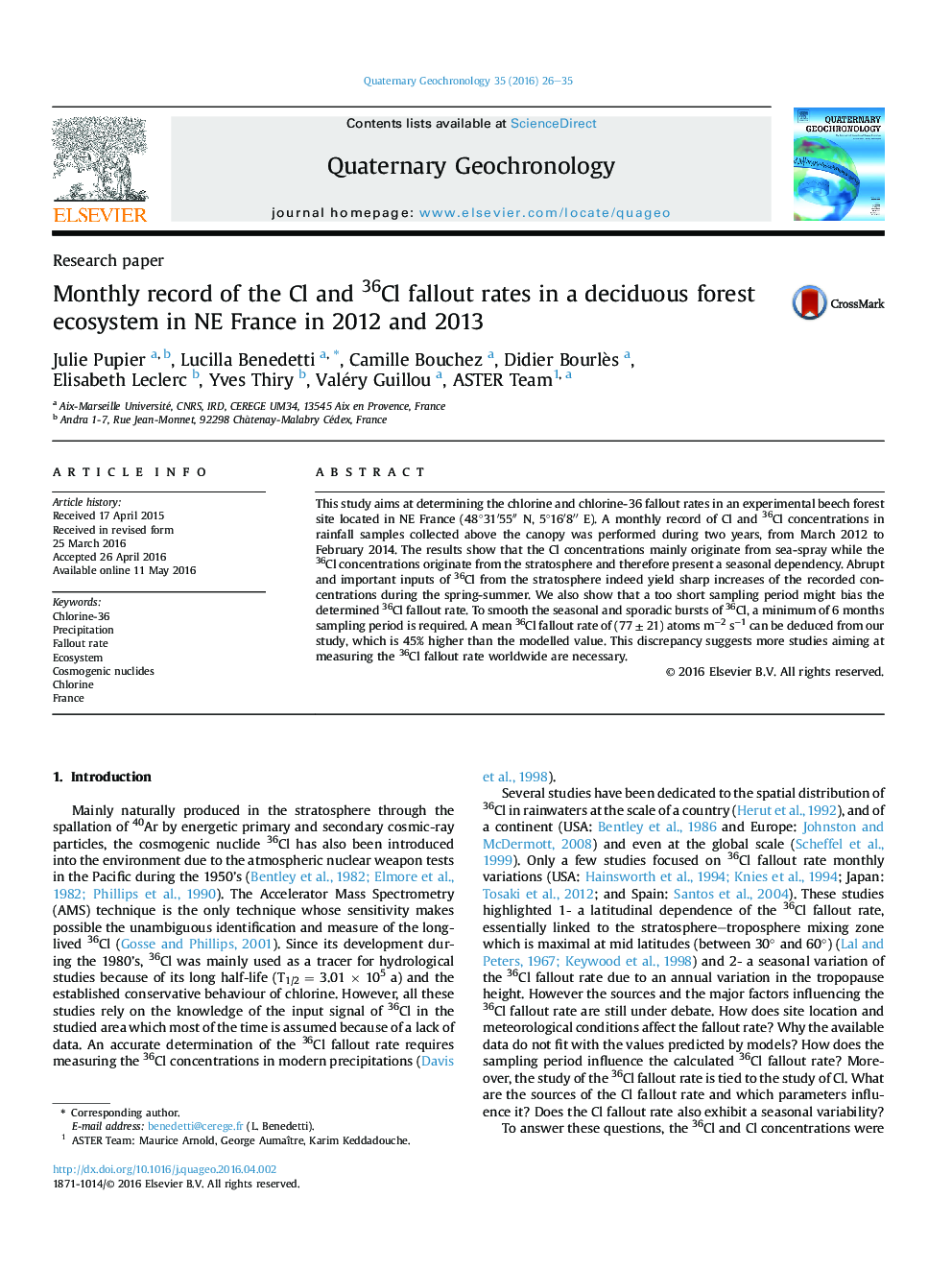| Article ID | Journal | Published Year | Pages | File Type |
|---|---|---|---|---|
| 6442467 | Quaternary Geochronology | 2016 | 10 Pages |
Abstract
This study aims at determining the chlorine and chlorine-36 fallout rates in an experimental beech forest site located in NE France (48°31â²55â³Â N, 5°16â²8â³Â E). A monthly record of Cl and 36Cl concentrations in rainfall samples collected above the canopy was performed during two years, from March 2012 to February 2014. The results show that the Cl concentrations mainly originate from sea-spray while the 36Cl concentrations originate from the stratosphere and therefore present a seasonal dependency. Abrupt and important inputs of 36Cl from the stratosphere indeed yield sharp increases of the recorded concentrations during the spring-summer. We also show that a too short sampling period might bias the determined 36Cl fallout rate. To smooth the seasonal and sporadic bursts of 36Cl, a minimum of 6 months sampling period is required. A mean 36Cl fallout rate of (77 ± 21) atoms mâ2 sâ1 can be deduced from our study, which is 45% higher than the modelled value. This discrepancy suggests more studies aiming at measuring the 36Cl fallout rate worldwide are necessary.
Related Topics
Physical Sciences and Engineering
Earth and Planetary Sciences
Geochemistry and Petrology
Authors
Julie Pupier, Lucilla Benedetti, Camille Bouchez, Didier Bourlès, Elisabeth Leclerc, Yves Thiry, Valéry Guillou, ASTER Team ASTER Team,
